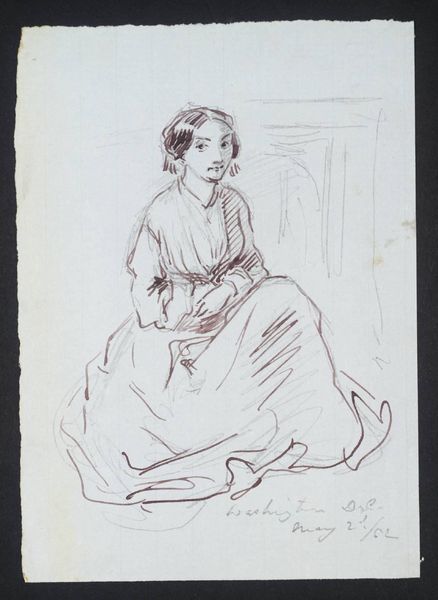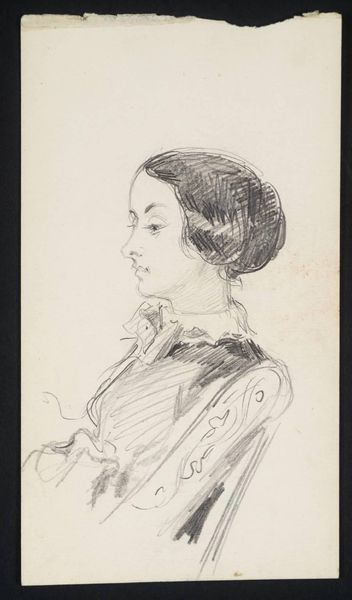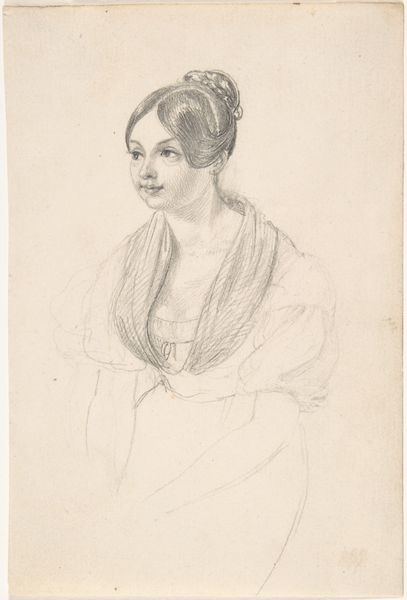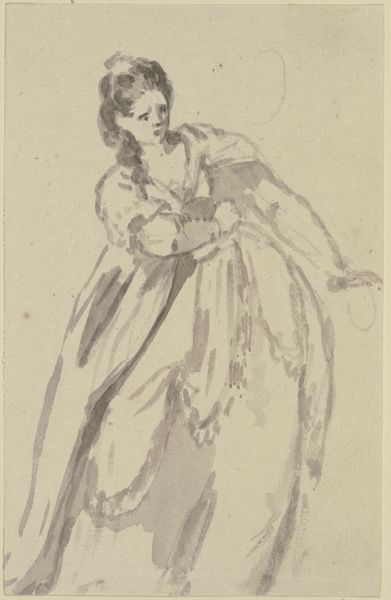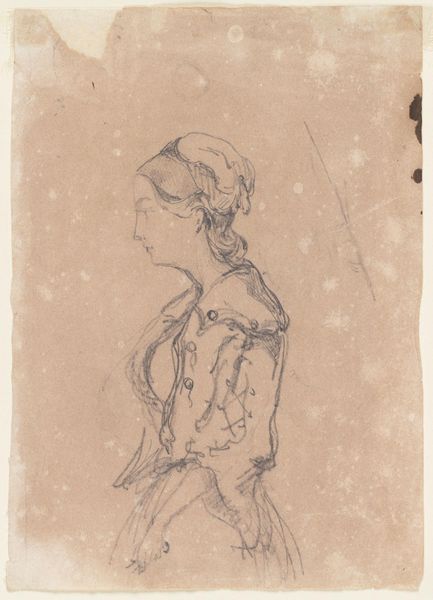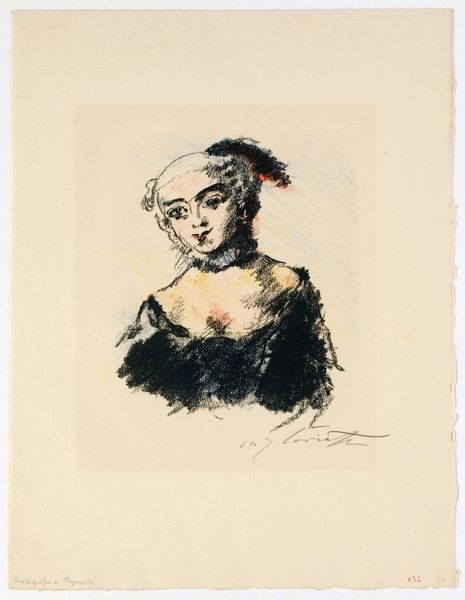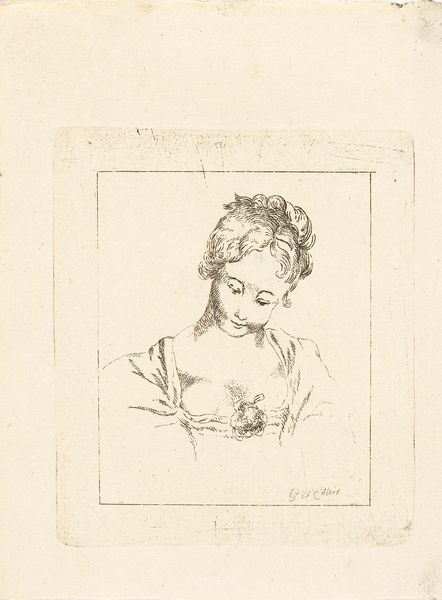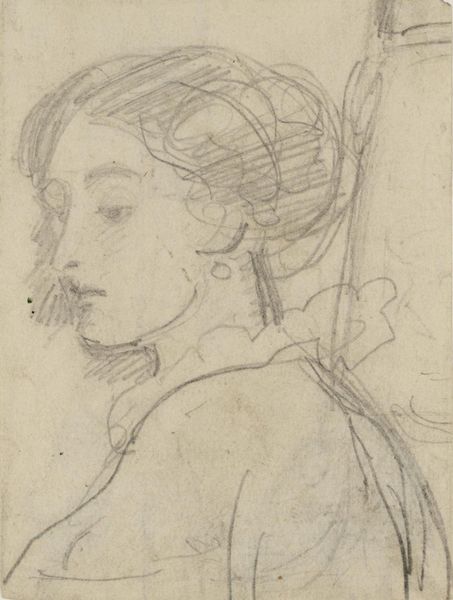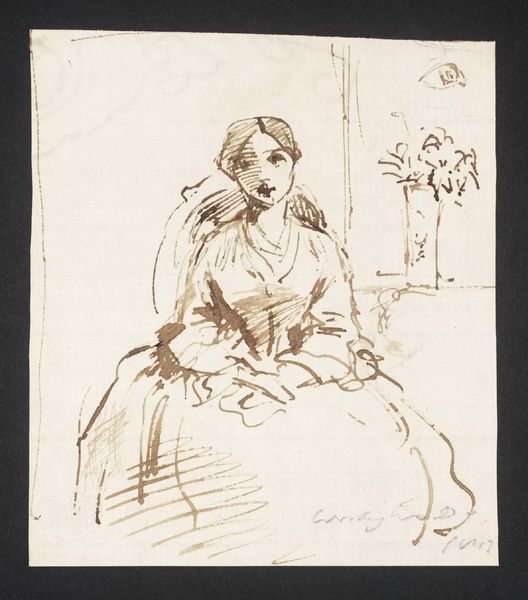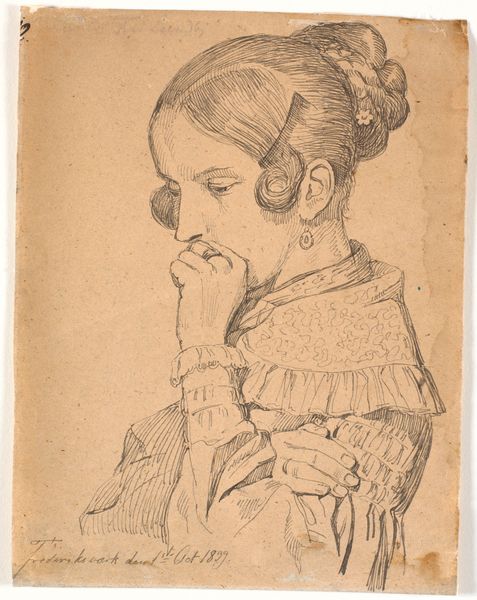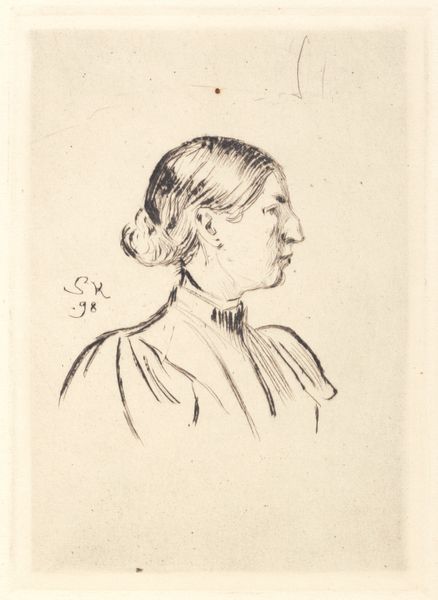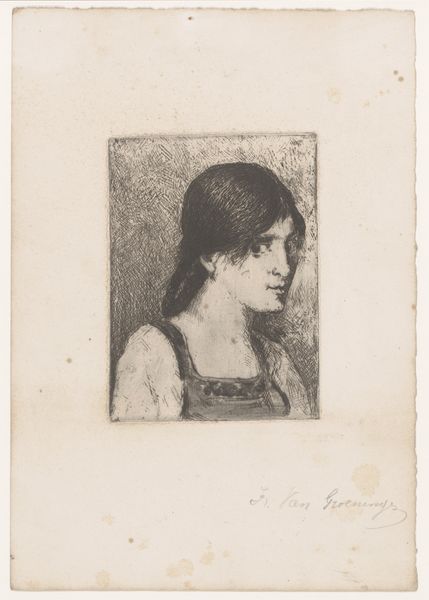
drawing, paper, ink
#
portrait
#
drawing
#
imaginative character sketch
#
childish illustration
#
quirky sketch
#
cartoon sketch
#
paper
#
personal sketchbook
#
ink
#
ink drawing experimentation
#
pen-ink sketch
#
line
#
sketchbook drawing
#
watercolour illustration
#
academic-art
#
sketchbook art
#
realism
Dimensions: height 48 mm, width 46 mm
Copyright: Rijks Museum: Open Domain
Curator: This drawing, entitled "Vrouwenkopje", meaning "Head of a Woman," is attributed to Johannes Tavenraat, dating from between 1840 and 1880. It’s currently held at the Rijksmuseum. My immediate impression is that it's rendered with a very sure, economical hand. Editor: It's captivating, yet undeniably somber. I’m struck by the tension in her posture, a slight hunching that speaks volumes about the societal pressures on women during that period. What's intriguing to me is the contrast between the delicate linework and the implied weight she carries. Curator: Exactly. It's executed in ink on paper. Looking closely, we see a rather economic use of materials; seemingly just ink, which speaks volumes about its likely creation as a preparatory study. We can almost visualize the artist’s hand moving across the paper, testing ideas before potentially using this rendering as inspiration for a painting. Editor: I agree; you can certainly see the practical considerations. However, there's something profound about this apparent "test". Consider the historical context: 1840 to 1880. Women’s roles were extremely confined. This head study becomes not just an aesthetic object, but a visual document hinting at those constraints and potentially, even a subtle resistance within them. Notice how her gaze is directed, almost defiant, even though in profile. Curator: Interesting perspective. What is particularly striking from a materials standpoint is the simplicity of execution allowing the figure itself to be at the forefront; there are no ostentatious flourishes or intricate techniques that distract. The artist makes clear decisions about light, and shadow, adding dimension using just simple hatching techniques, thus creating the form using purely ink, and the white of the paper. Editor: The rawness of the sketch further humanizes her. In contrast to idealized, finished portraits, this feels intimate and immediate, as though we're glimpsing a moment of authentic selfhood. Considering the rise of feminist thought during that time, it’s hard not to interpret this image as reflective of that burgeoning sense of female agency, an early depiction of a shift in representation. Curator: Well, thank you for those valuable insights, which, in their historical context offer an alternative viewpoint on its creation, versus what appears to be merely a simple portrait made from the modest and straightforward utilisation of ink on paper. Editor: And thank you! It is indeed amazing to me how one artwork’s purpose can take on new meaning once filtered through our contemporary experience.
Comments
No comments
Be the first to comment and join the conversation on the ultimate creative platform.
